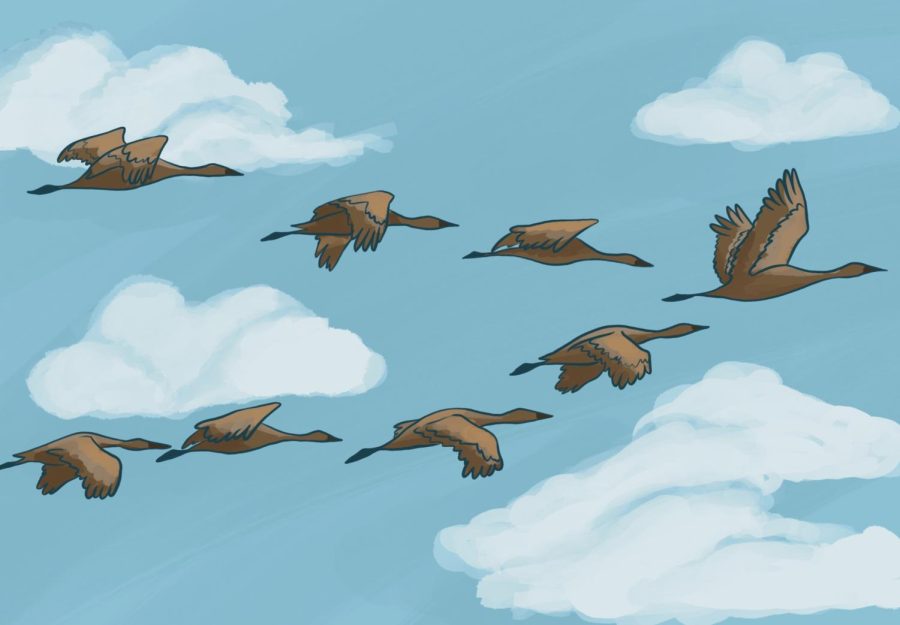How do birds know how to migrate?
Mar 23, 2023
As spring approaches, the weather is getting warmer and birds will begin migrating north again. With this in mind, it brings up the question: How do birds know how to migrate?
Luckily, Dr. Michael P. Ward, professor in ACES and ornithologist, helped answer this question.
According to Ward, birds will “decide” when to migrate based on photoperiod, the period of daylight each day.
“Just like we are noticing the days are getting longer, birds that breed in central Illinois, but are spending the winter in Central and South America, also note the days are getting longer,” Ward said.
The longer days create hormonal changes within birds. This causes birds to gain fat that will be stored during migration and provide twice the amount of energy when burned compared to protein or carbohydrates, according to bird migration organization Journey North’s website.
Get The Daily Illini in your inbox!
Once their bodies are ready, the birds will begin their migration.
Birds instinctively know which direction to fly, Ward said. They will fly in a northern or northwestern general direction.
But how do birds know which direction to fly? According to Ward, there are multiple factors that help birds “navigate from their wintering grounds to their breeding grounds.”
First, birds can sense magnetic fields.
“In some ways, they have an internal compass,” Ward said.
In other words, birds can use tools in the sky to help them navigate. Birds use stars and constellations, such as the Big Dipper, to guide them. Additionally, they use the location of the sun and polarized light, or light at sunset.
“Birds have multiple and redundant systems that allow them to perform their amazing migrations of thousands of miles,” Ward said.
Another way birds navigate their journeys north is by using the surrounding landscape and its landmarks. According to Ward, birds will use general landmarks like coastlines and consistent smells on the landscape to guide them.
To explain this idea further, Ward referenced the example of the chimney swift, named after their tendency to nest in people’s chimneys. These birds will migrate to and from the same locations each year.
“When the chimney swifts arrive in late April to campus those individuals likely bred on campus last summer, spent the winter catching insects over the Amazon Forest and then returned to campus,” Ward said.






